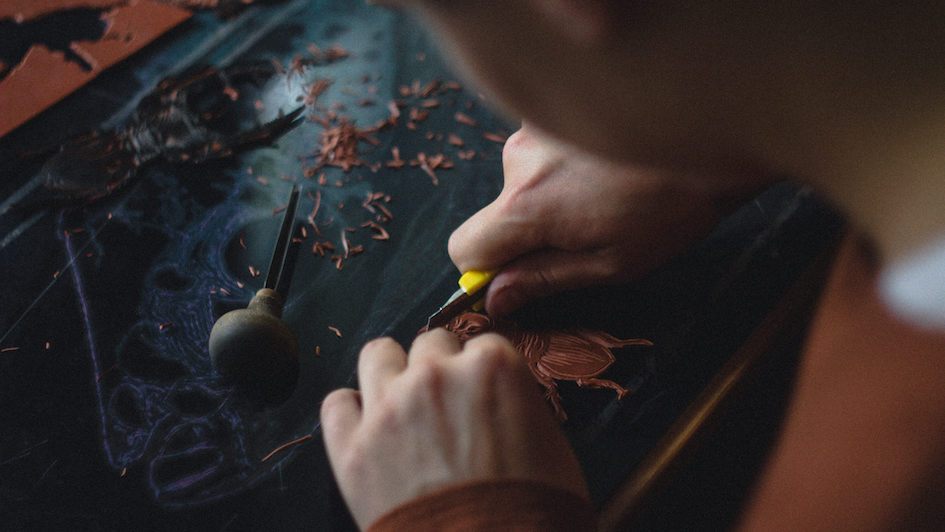
We all know that consumers today aren’t simply passive people ready and willing to consume products and services as and when brands decide. They are more creative, ambitious, and informed than ever. They are skeptical and savvy about branding and marketing, and they own technology that even enables them to be the producers, promoters, marketeers, and event merchants of their very own media and products. In short, they are creators: people who feel empowered to create their own products and brands, and who play an increasingly active role in shaping brands that already exist.
This all goes back a long way. The first time we heard about this new type of consumer was 30 years ago when Alvin Toffler wrote about “prosumers” in his book, The Third Wave. He foresaw a future where people would produce goods rather than just purchase final products. Enabled by technology and driven by a need of self-actualisation, he predicted that people would lean more and more towards producing their own clothes, food, and other goods.
Time has passed and today we live in a world where this is a reality. In fact, people have gone beyond producing their own things for self-consumption, and instead make and create things that others want to consume, creating new brands and businesses in the process, or sharing and giving something back to society. A big part of this is the everyday consumer as the empowered media and content creator, often making content that people prefer to engage with over that which has been created by actual brands.
In this new era, the brands that jump on this wave of empowerment are the most likely to succeed. Those brands that acknowledge their customers’ aspirations and desires, and help them achieve them, can forge longer-lasting and deeper customer relationships based on the perception of real value and authenticity. Positive brand building can also result from the products and the content that brands enable their customers to create – just think about the “Shot with iPhone” campaign.
How brands can engage creators
There are different ways brands can empower creators. First brands need to ask themselves what does their audience want to achieve? What do they aspire to? How can they help them achieve this? How can they empower them? What technology can they leverage to make this possible?
It comes down not only to creating different products and services, but also re-thinking the different moments when brands communicate with their audiences:
- Give them tools – Give people the technology to make and create either their own products or content, or adapt the brand’s products, content, and services.
- Give them skills – Feed their curiosity with knowledge and the skills to make things or create content.
- Share unique knowledge – Reveal to customers the secret of one of your products, the process, the ingredients.
- Build a community – Help them reach other people with the same interests to share and collaborate with.
- Open a marketplace – Help them reach the people that can use/buy/engage with what they are making.
Not all of these approaches are right for every brand, and it’s definitely not one-size-fits-all. For example, I wouldn’t suggest that every brand open up the space for their customers to adapt their products. It’s not for everyone – remember Boaty McBoatface? It has to be the right approach for the brand.
Some brands might be better off with a safer approach, for example where the creator empowerment is limited to a contest to present a business idea to win the chance to get funding – Virgin did this with the Pitch to Rich campaign. Other brands might be able to make the empowerment element part of their own business model, like the way ASOS opened a marketplace for independent designers. Or it could be the very reason of being for the business itself. Just think about Instagram, Youtube, and Etsy.
One brand that has taken a bold step towards empowering creators is Barclays Bank, by partnering with the FabLabs network, to create their own “maker spaces” called Barclays Eagle Labs, open to customers and non-customers. They’re demonstrating a genuine understanding of the business audience’s needs by actively investing in these spaces.
There’s much more for businesses to do today than to just sell finished products. They have to think of new ways to remain relevant and interesting to the “creator consumer,” always aligning these initiatives back to their brand’s purpose.
What does this mean for creative agencies?
The meaning for agencies is two-fold:
Firstly, we need to think about connecting, engaging, and treating people as creative, intelligent, and ambitious human beings. We need to think about them as creators. Approaching a project with this in mind can open up completely new creative ideas: ideas that can empower more people to create or recognise what they’re already creating.
To get it right, we first need to make sure we understand the creators’ ambitions, their behaviour and their emotions. We also need to understand the brand – what’s its role in this new context? How can it support these ambitions? Where does it have permission to operate?
Secondly, agencies need to foster new and different ways of collaborating with clients and partners to maximize the opportunities they can create to engage with creators. There are greater benefits from a closer collaboration with clients to define the problems that need to be solved before thinking about how to solve them. Similarly, clients can use the creative resources they have at the agencies they work with to solve more than cosmetic problems. They can use them to solve deeper business challenges with initiatives that can build stronger connections between brands and this new breed of ambitious, informed, and creative consumers.